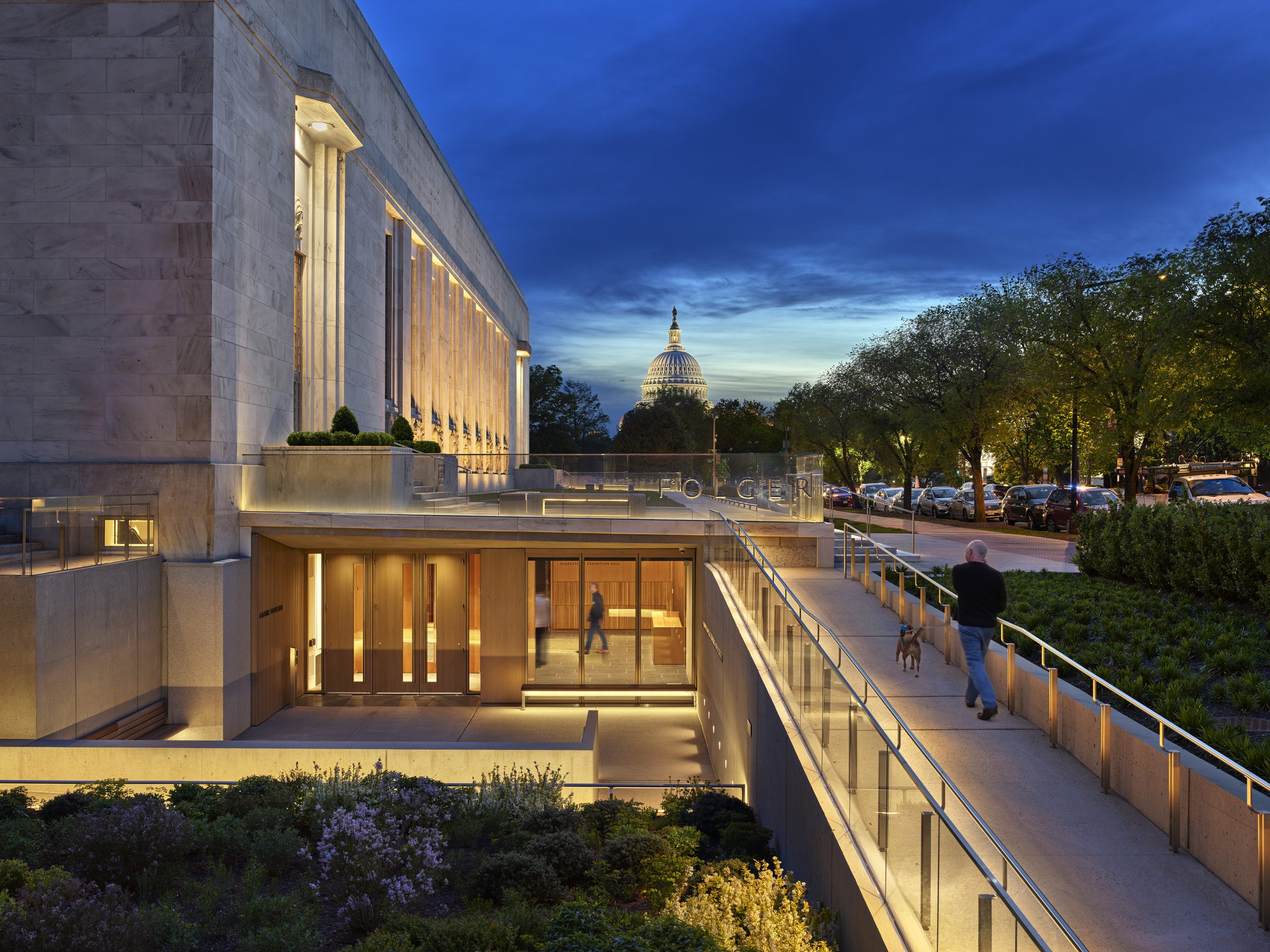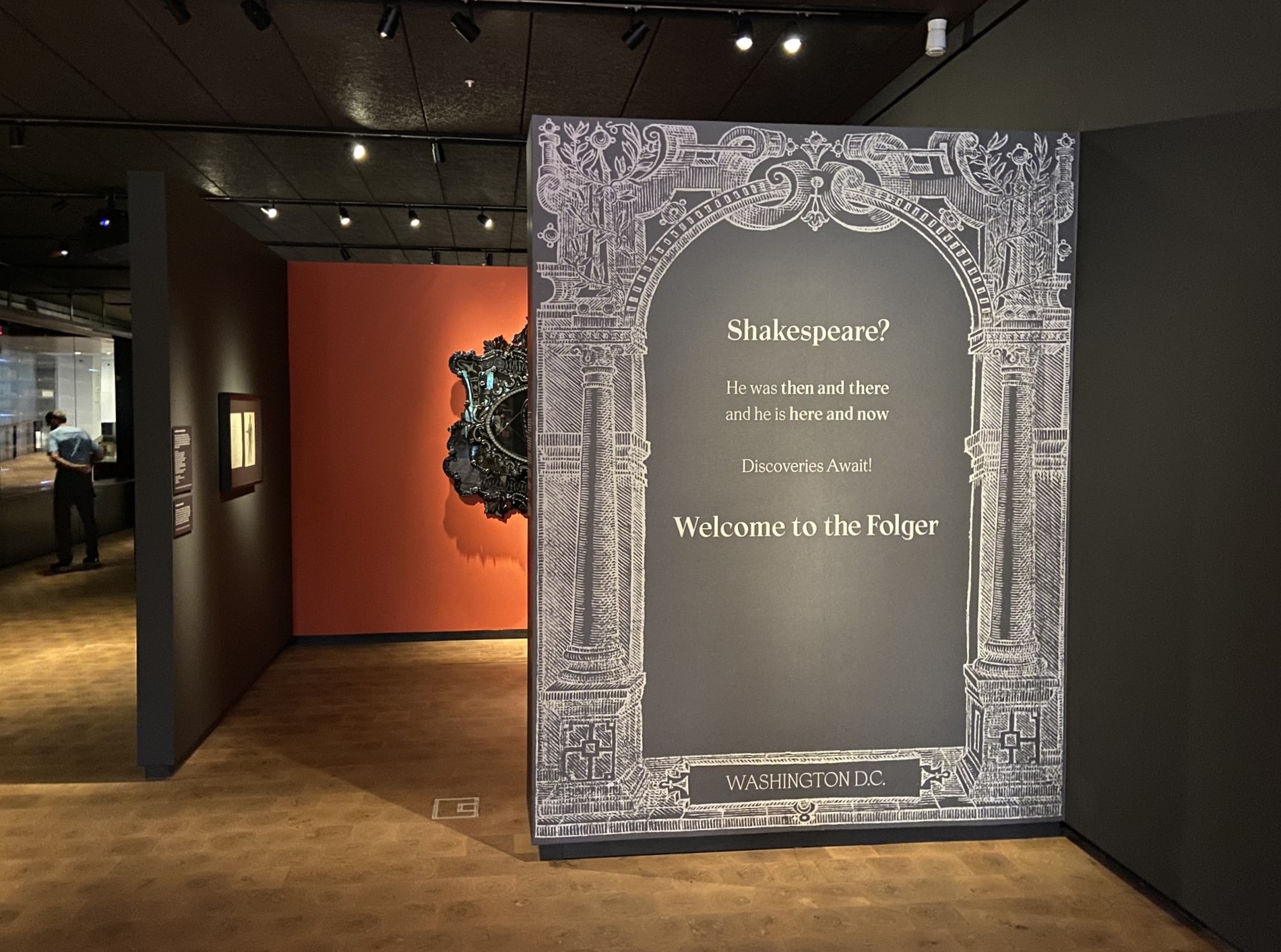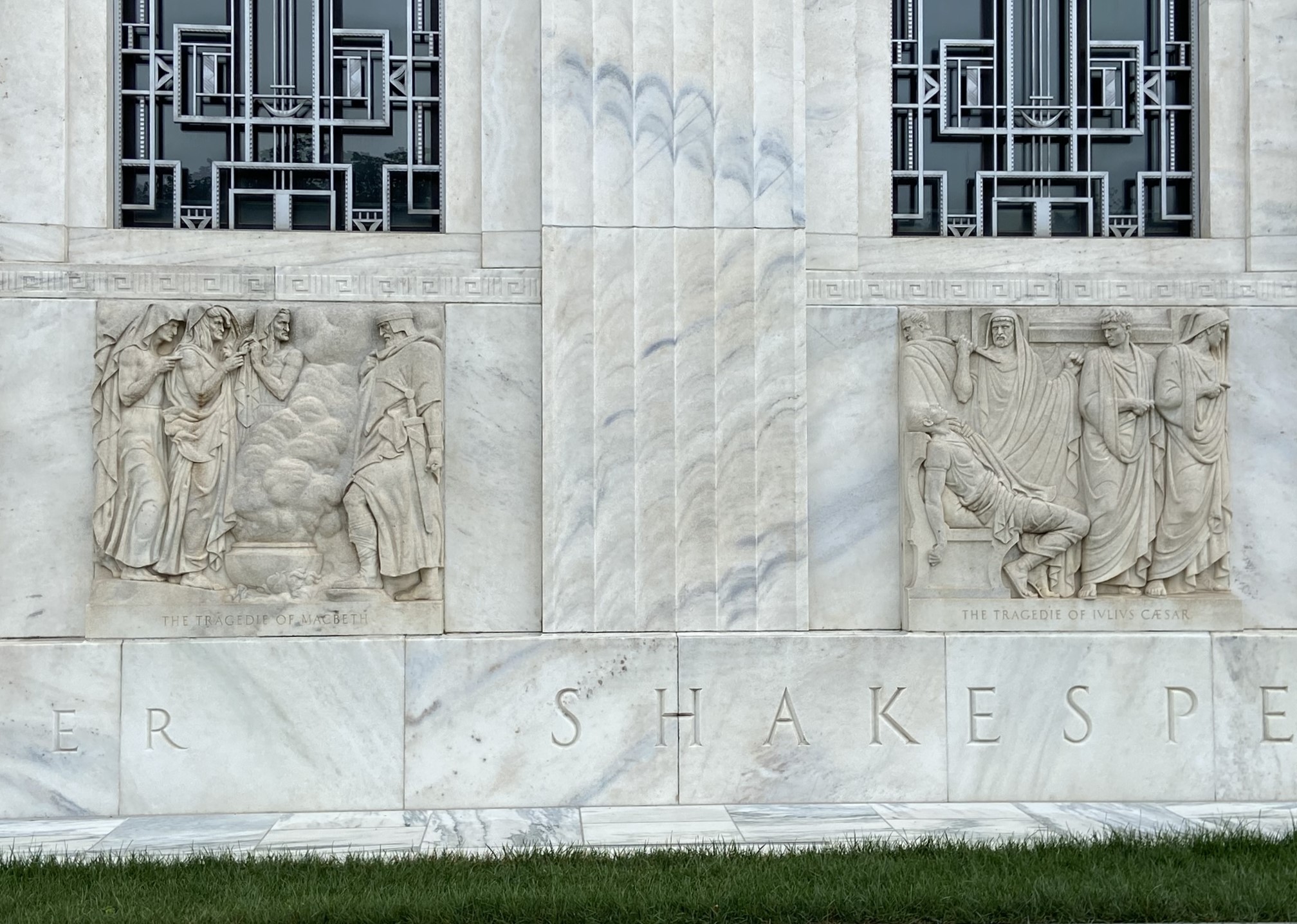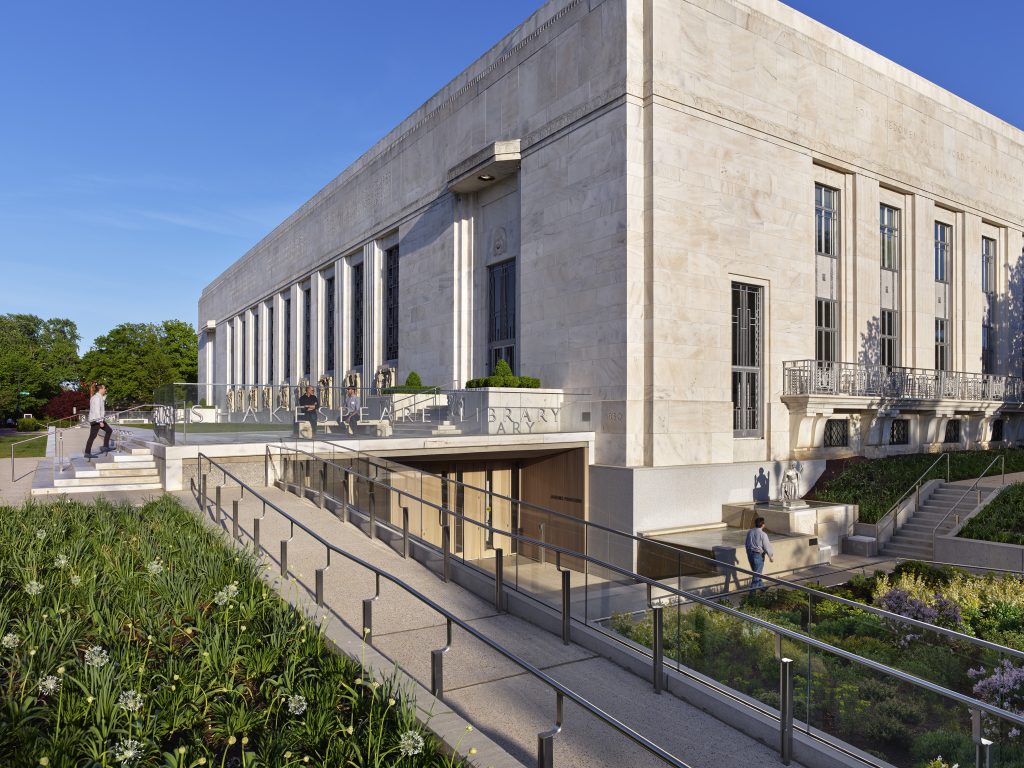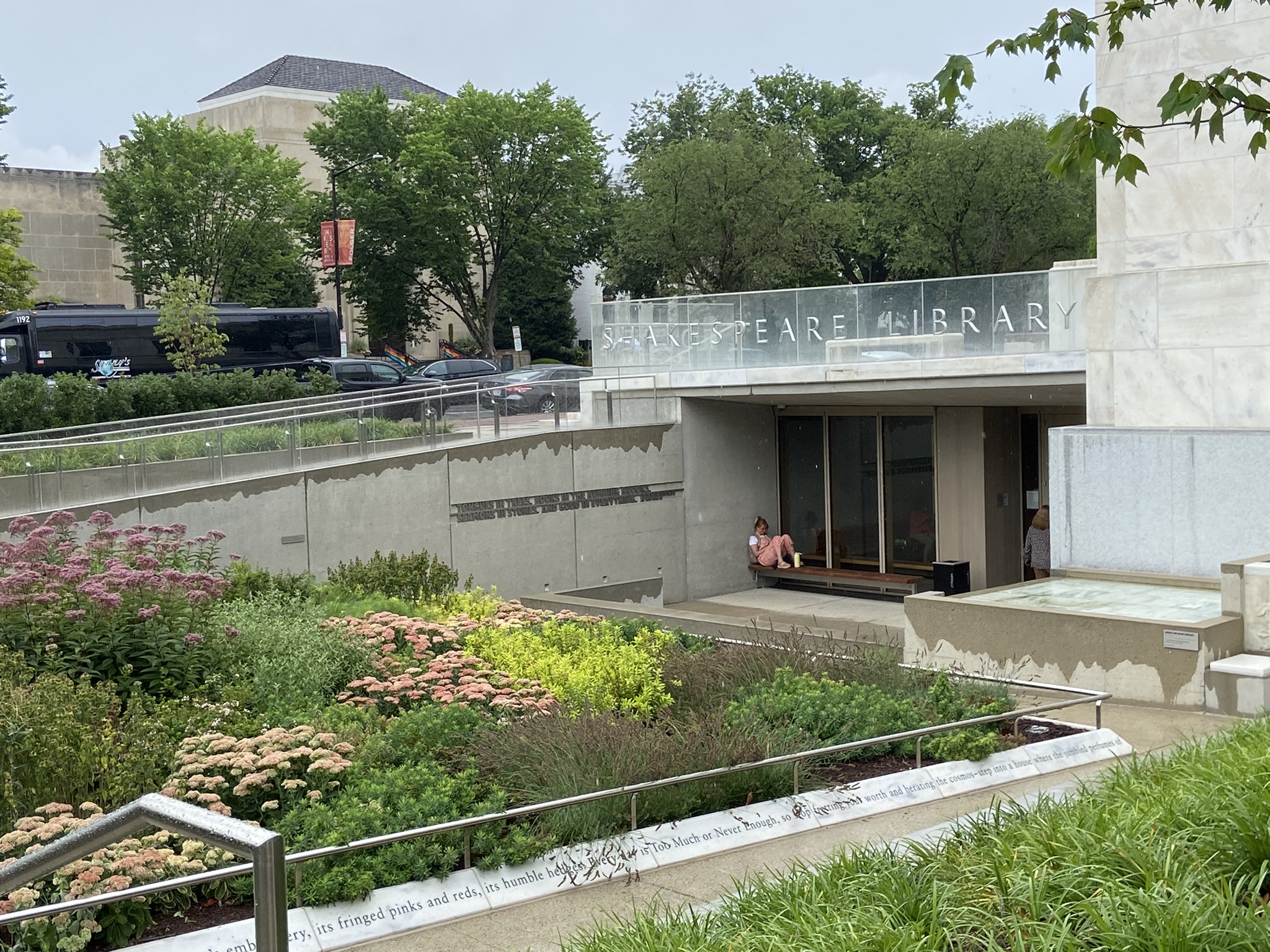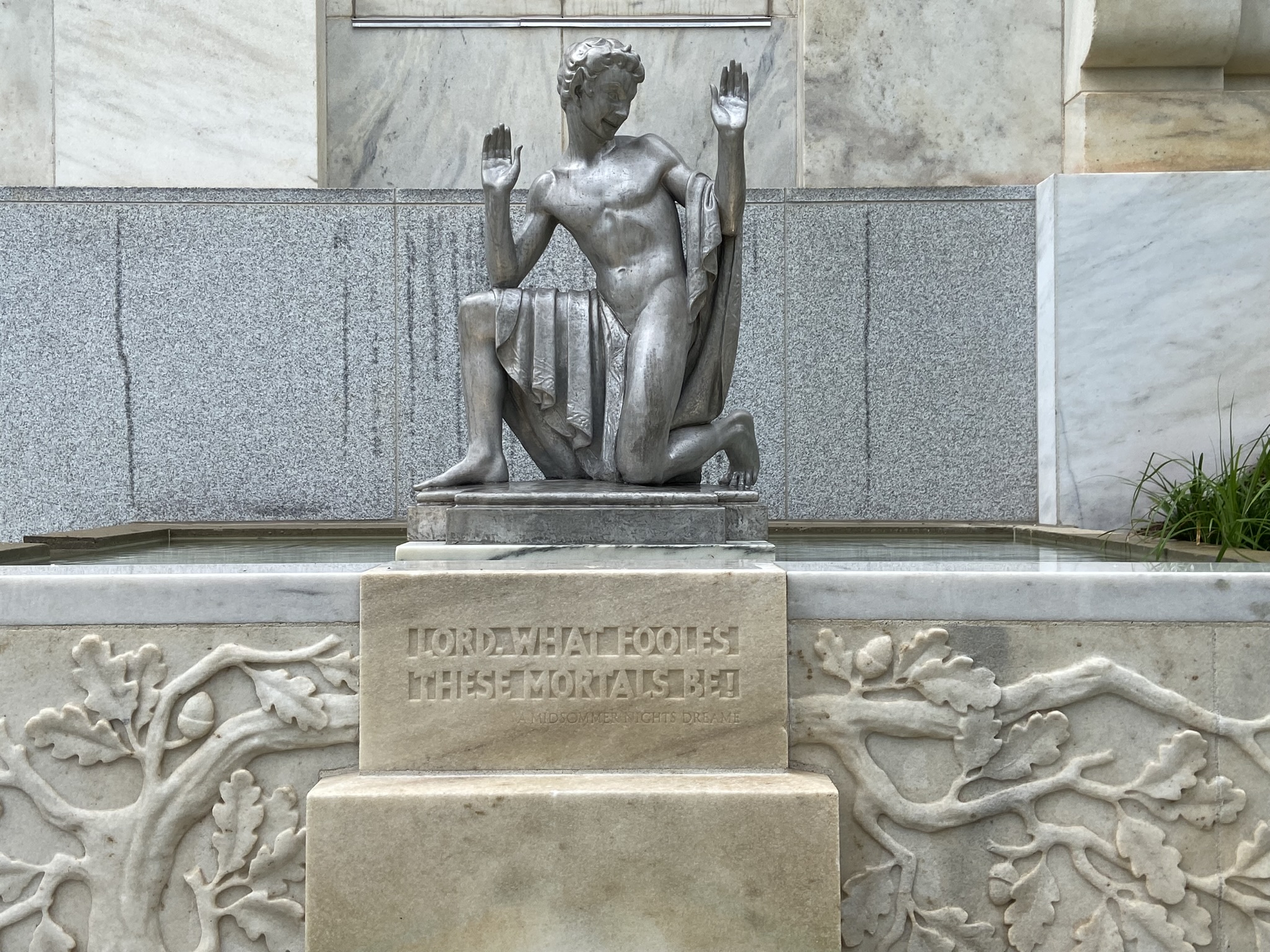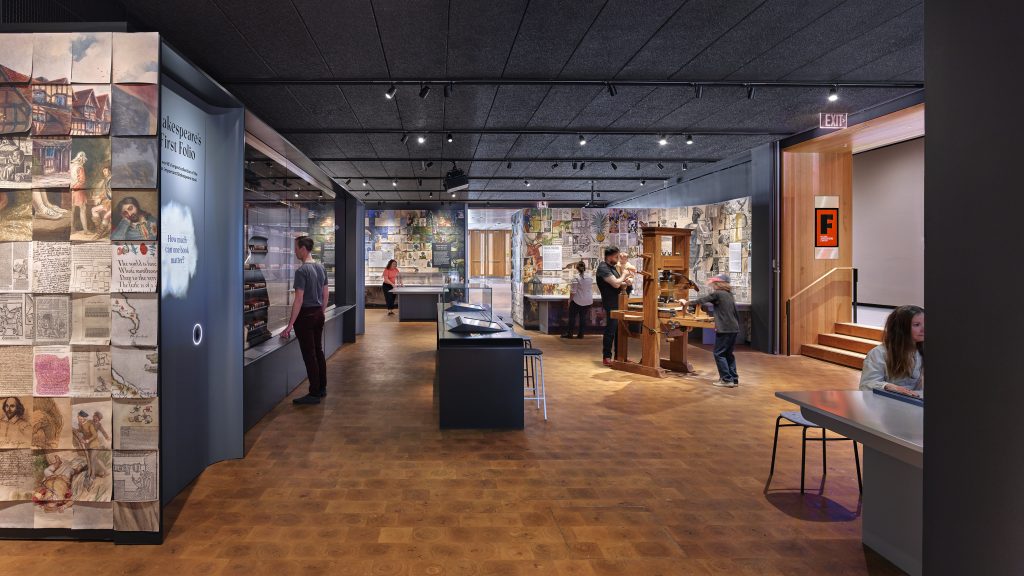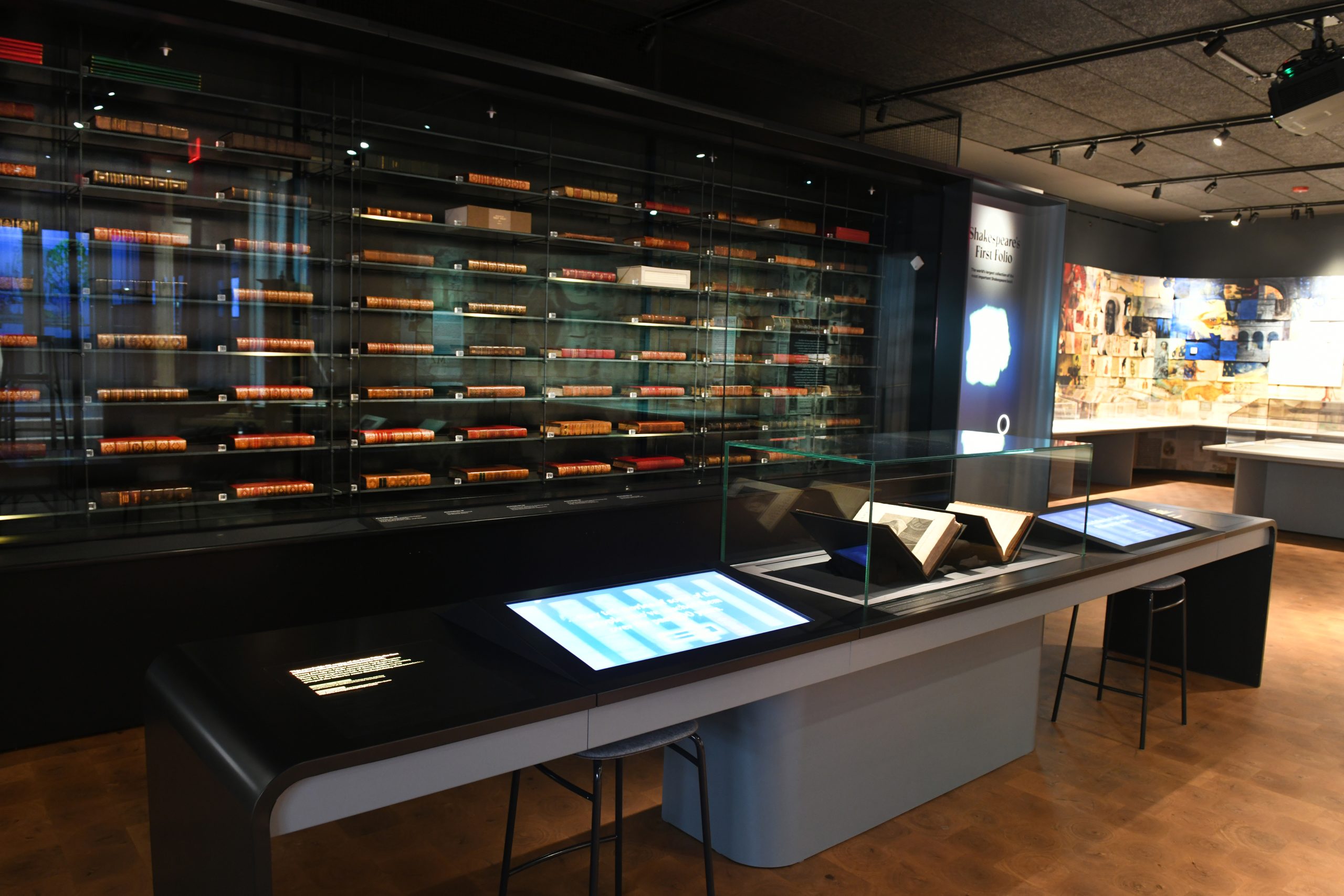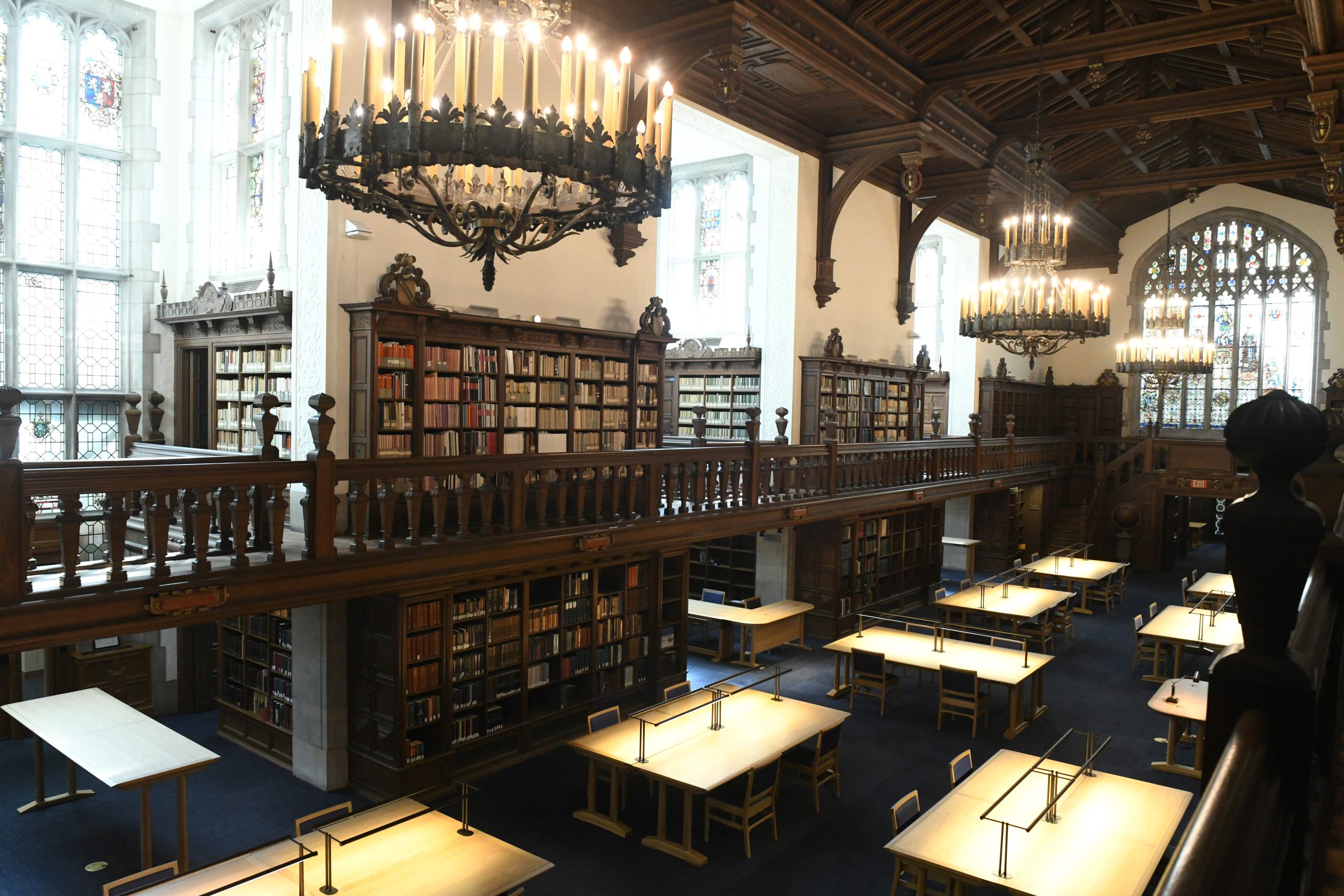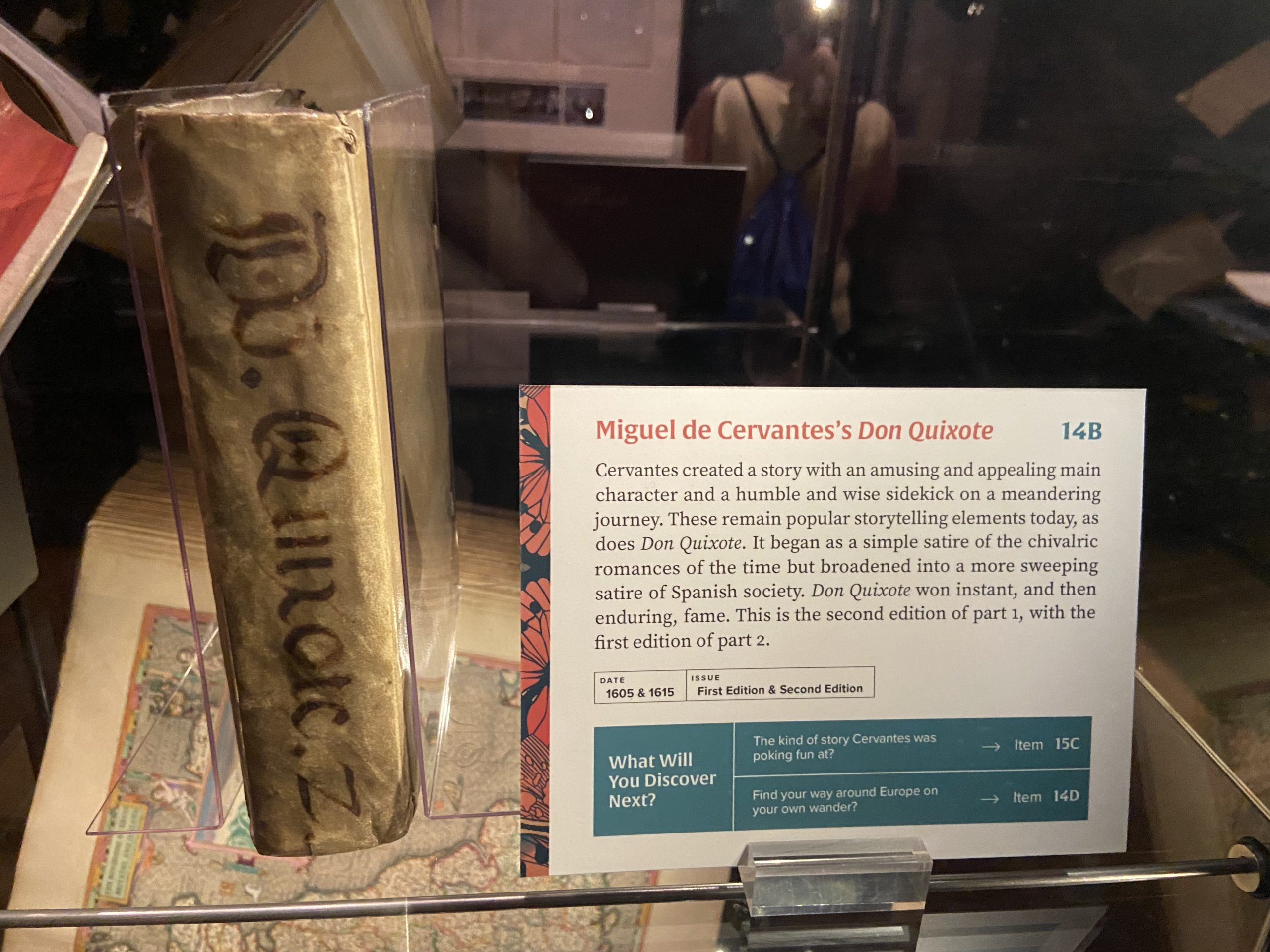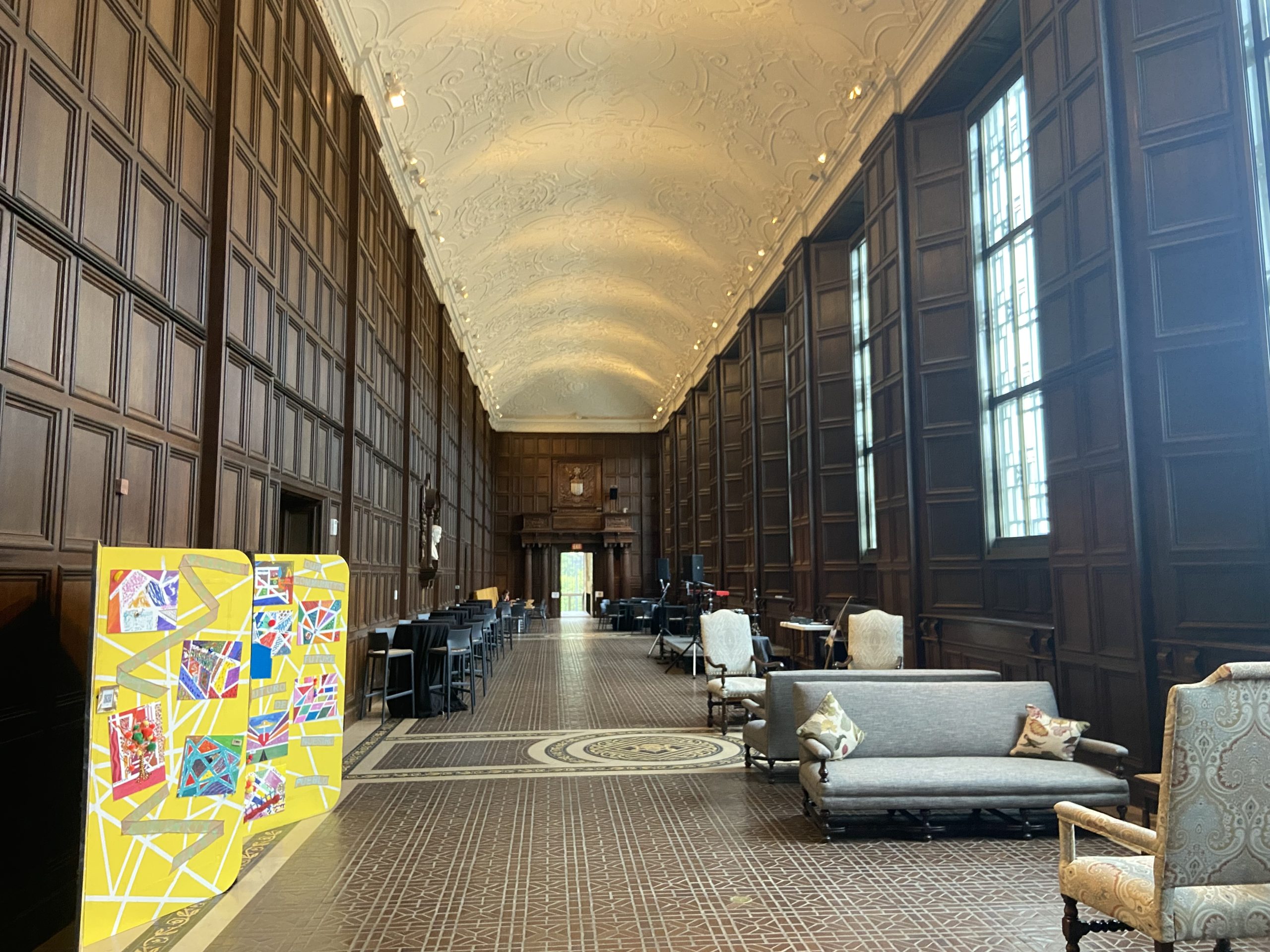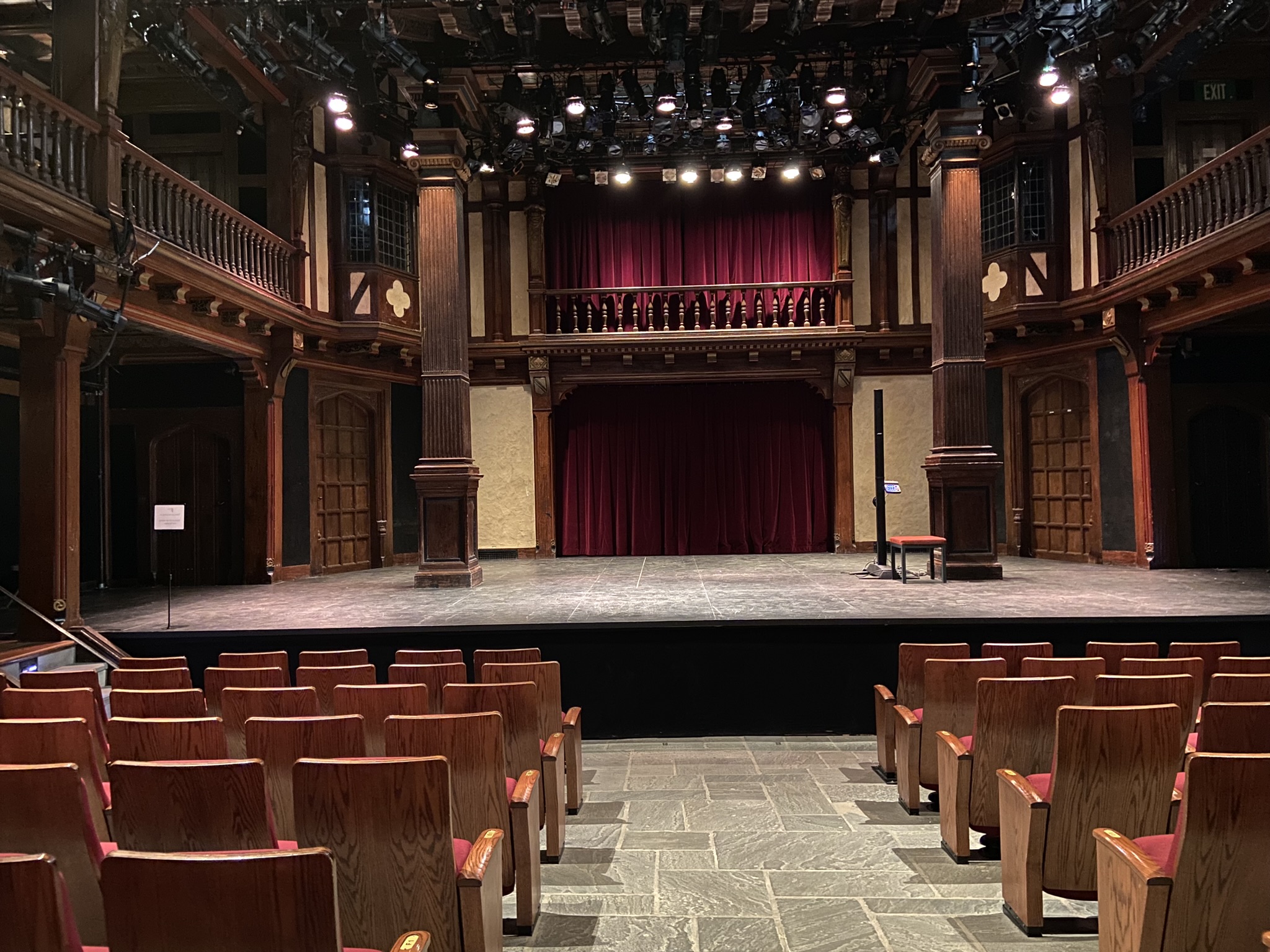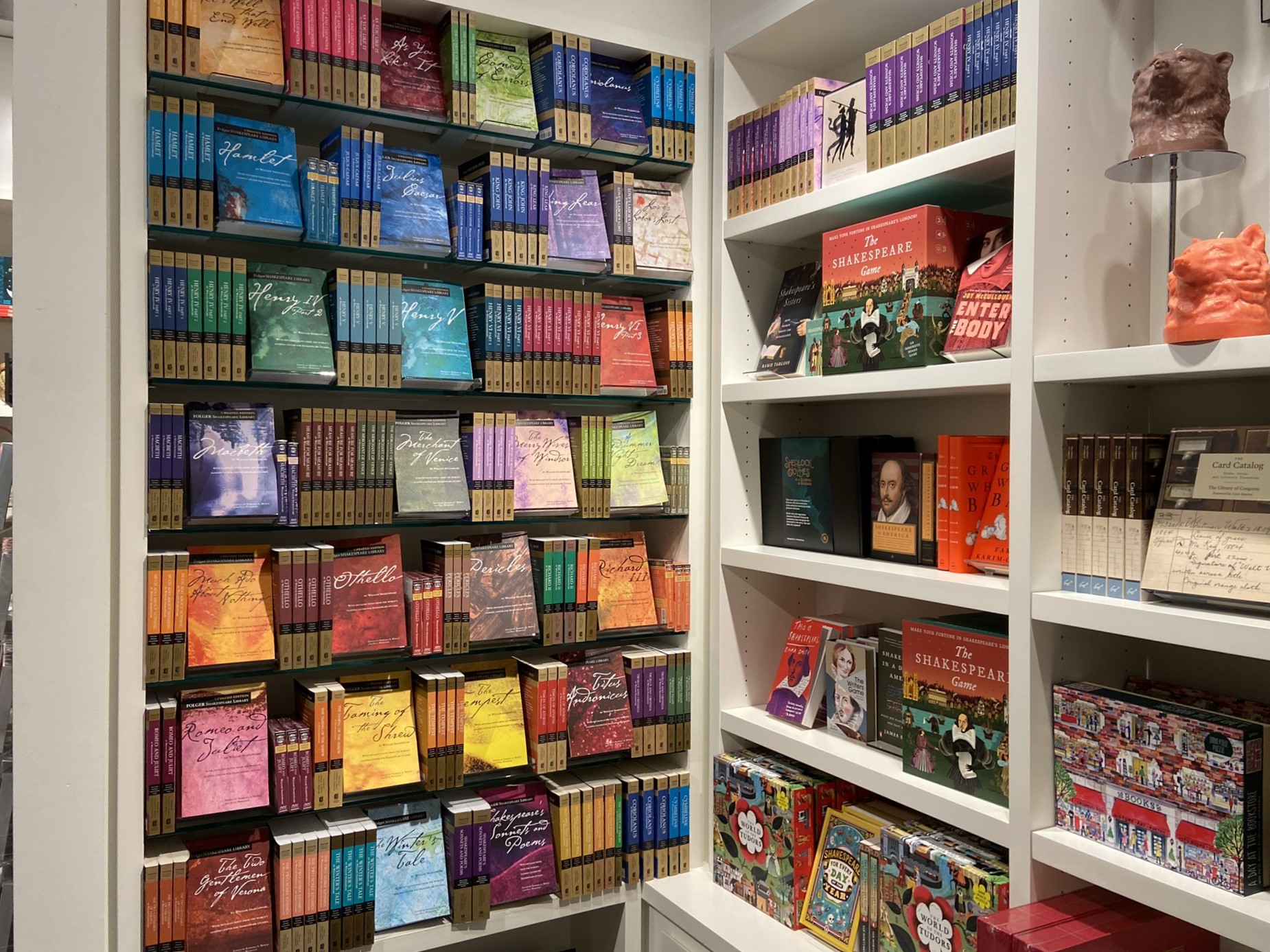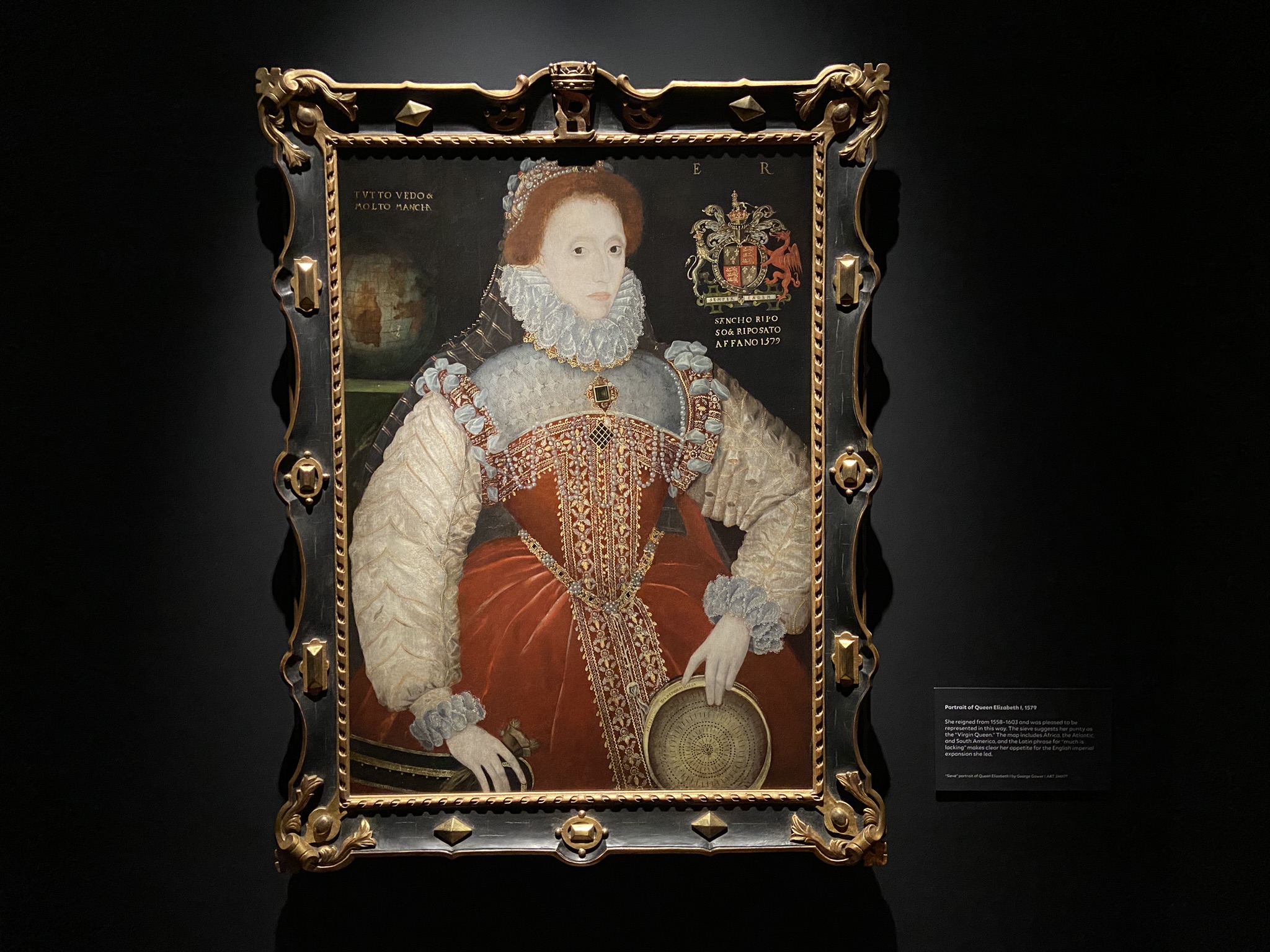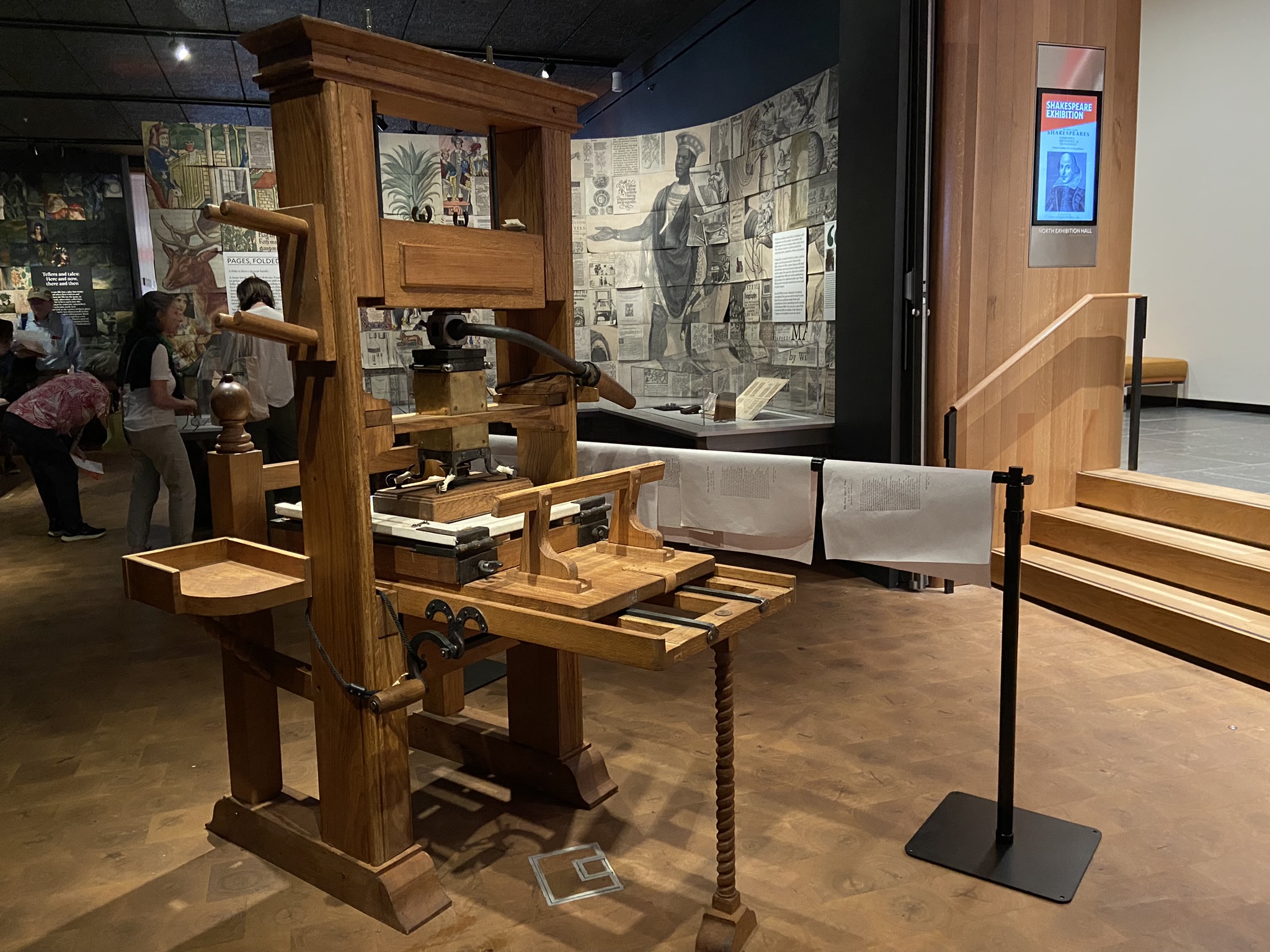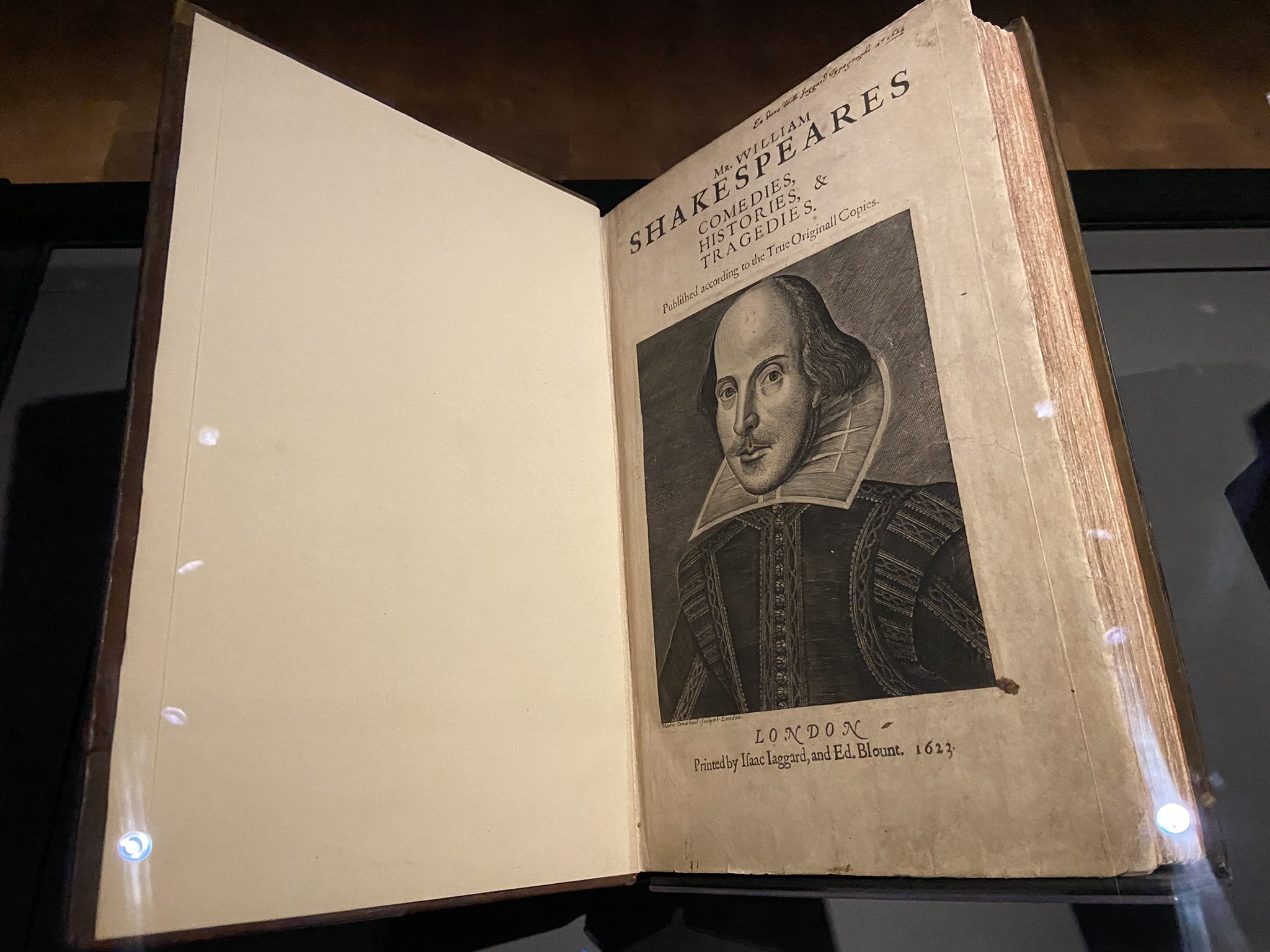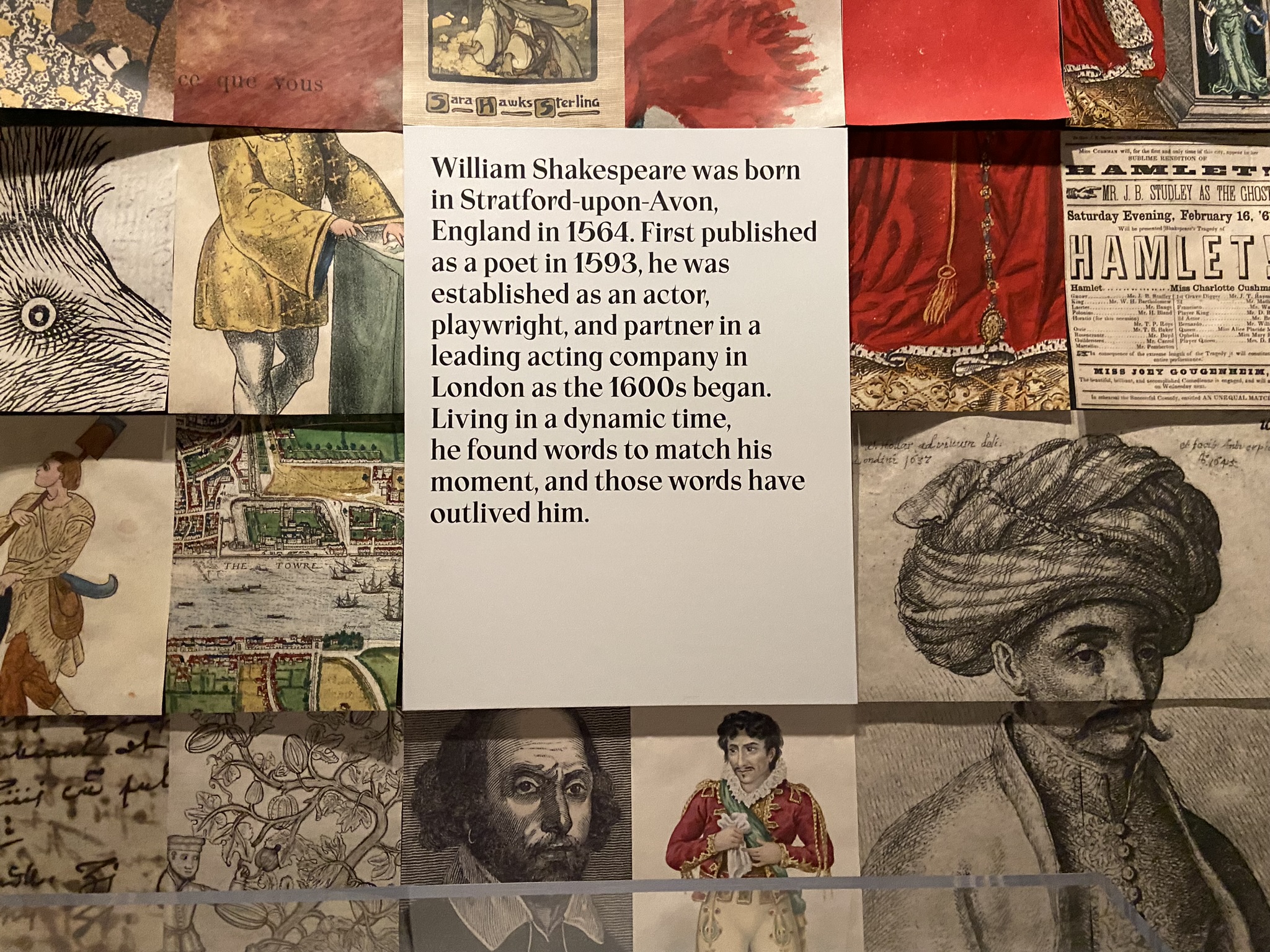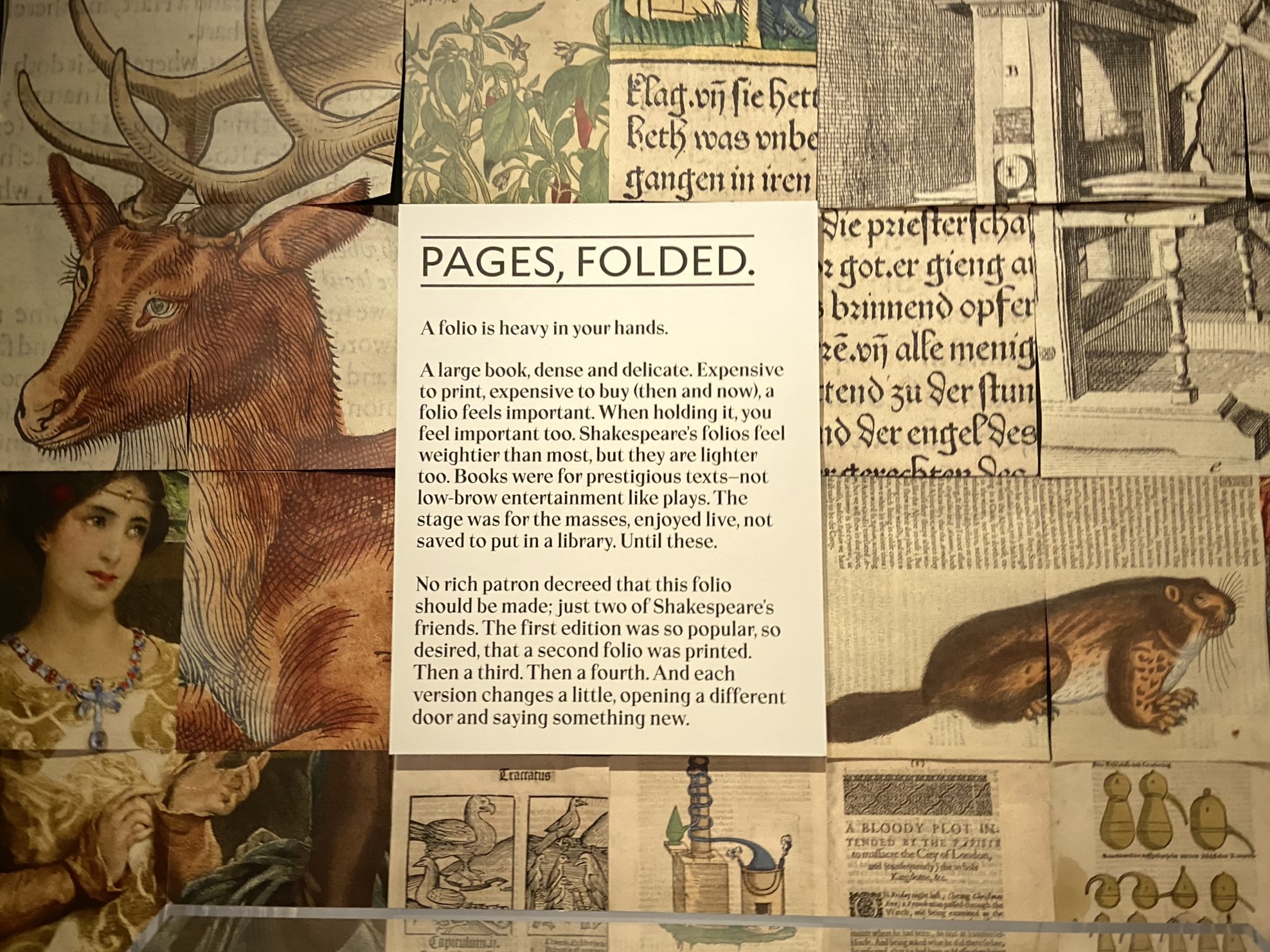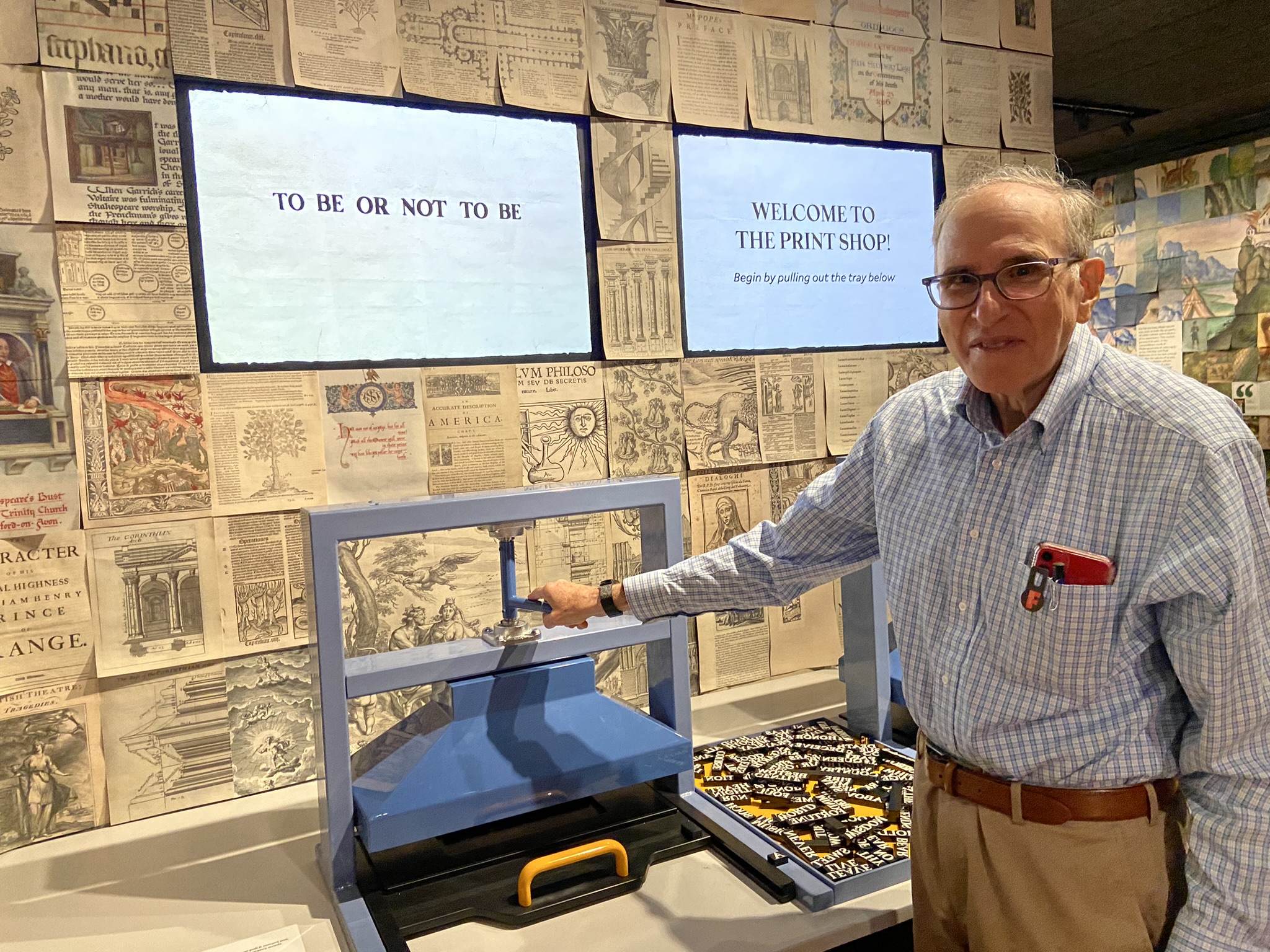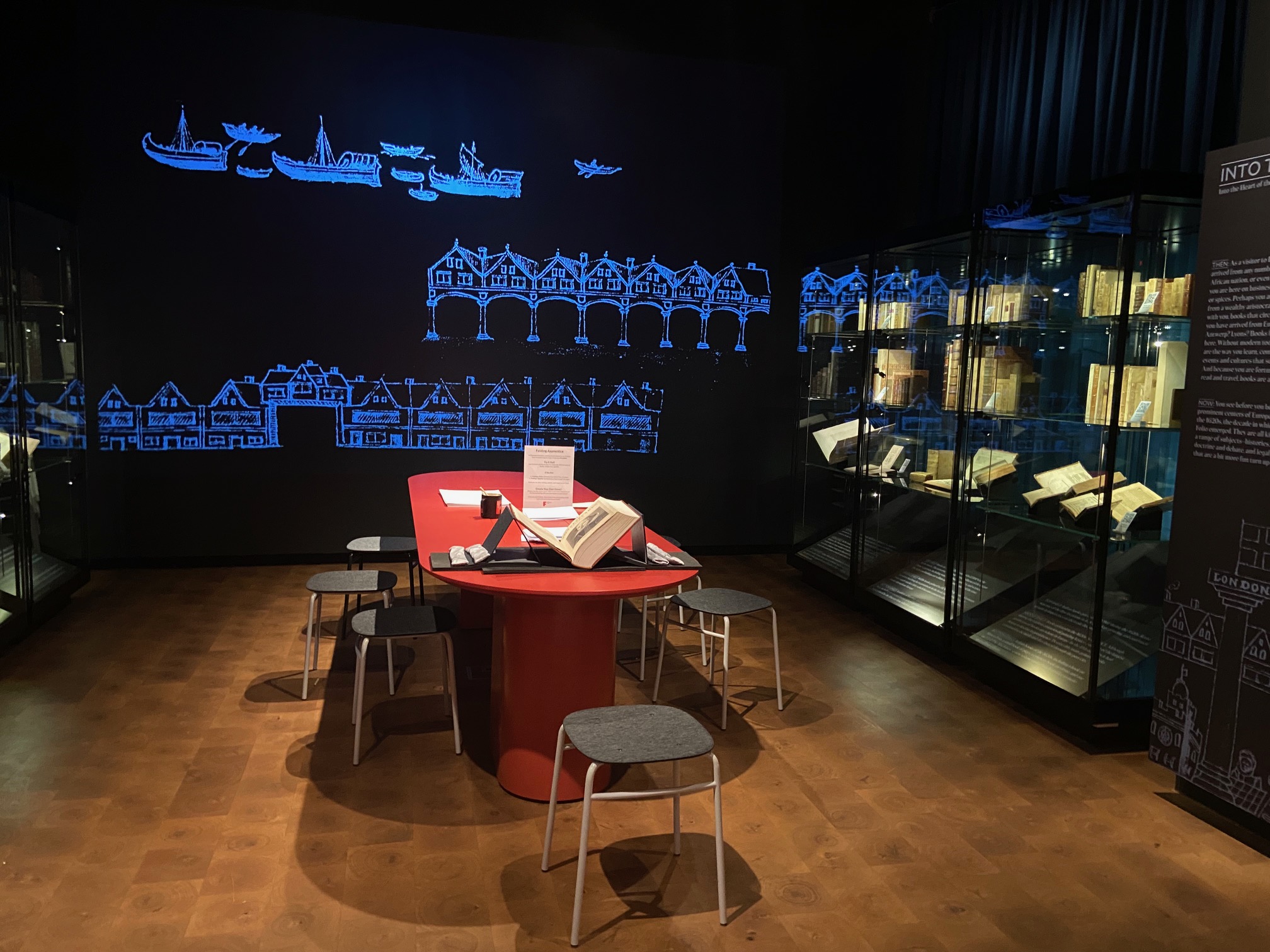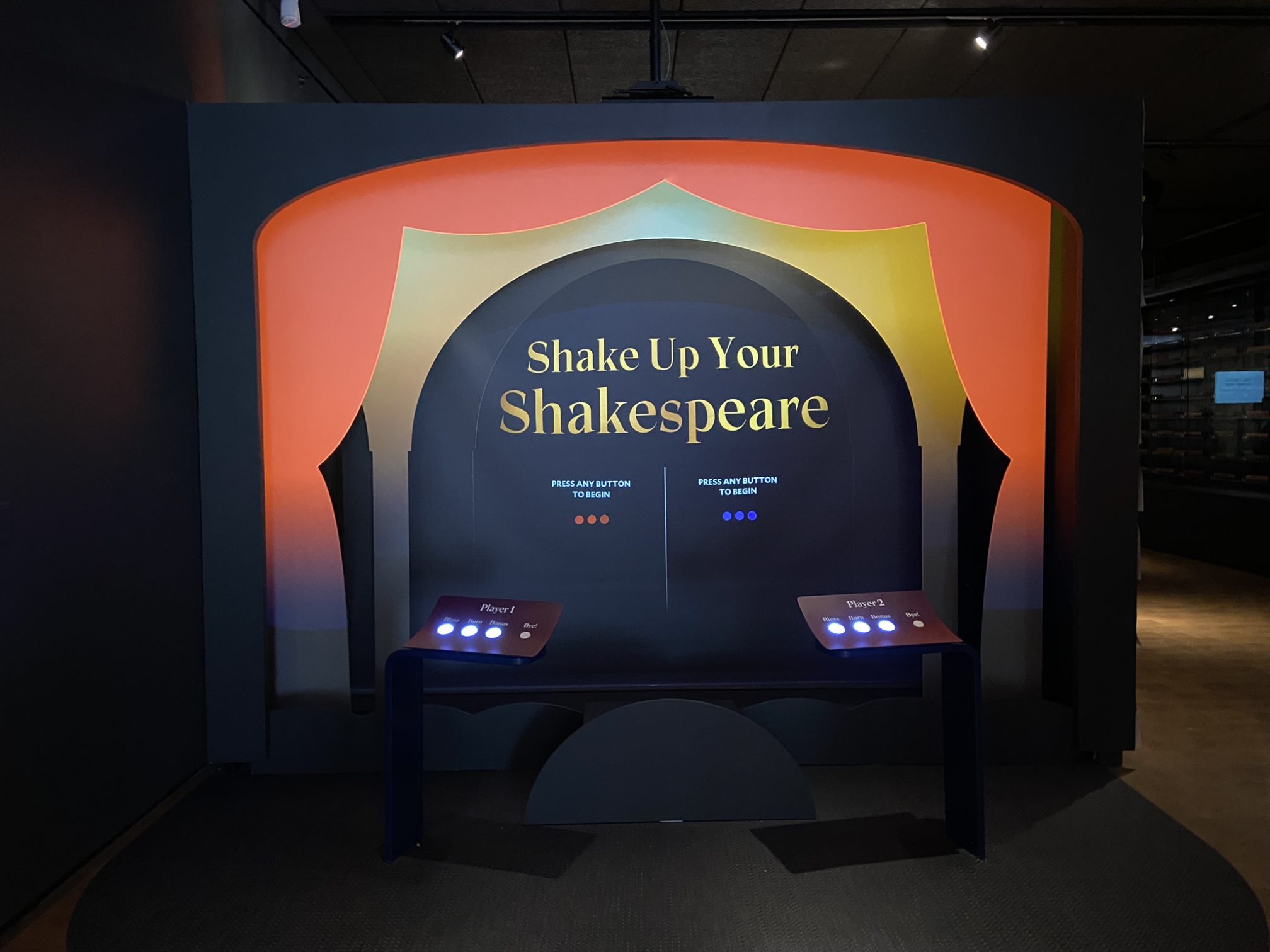In June 2024, the Folger Shakespeare Library in Washington, DC, celebrated its reopening after an $80.5 million renovation and expansion designed to help make the renowned research library a cultural destination that can engage everyone. Located on Capitol Hill and home to the world’s largest Shakespeare collection, the Folger has a new public wing with exhibition spaces that present treasures previously viewable mainly by scholars. Among these are its astonishing 82 copies (of 235 known copies) of the First Folio, the first printed collection of all Shakespeare’s plays, published in 1623.
The reopening marks the start of another phase in an ongoing evolution. As former Folger Director Michael Witmore, who ended an 11-year tenure on June 30, said, “Scholars, students, theatergoers, museum lovers, DC residents, and tourists visiting DC are all going to be treated the same way in terms of welcome, programming, and support. Our radical intention is to treat everyone like they belong, and to do so we must extend a credible and lasting invitation.”
Today’s Folger grew out of the efforts of Henry Clay Folger (1857–1930) and his wife, Emily Jordan Folger (1858–1936), who bonded over a love of Shakespeareana. Folger made his fortune working at Standard Oil but lived frugally, enabling the couple to maximize their book and manuscript purchases. Unfortunately, Henry died before the completion of the library the Folgers built to house their collection. He left assets in trust to Amherst College (his alma mater) to administer the library, and the Amherst Board of Trustees continues in that role, though the Folger has its own Board of Governors.
In 2013, then-Director Michael Witmore and the Folger’s board finalized a strategic plan to address the building’s practical needs and prepare it to present Shakespeare for a new age. After a four-year closure for the renovation, additional exciting changes lie ahead. Dr. Farah Karim-Cooper, a Shakespeare scholar, author of The Great White Bard: How to Love Shakespeare While Talking About Race, and part of the leadership team at Shakespeare’s Globe Theatre in London, will become the Folger’s director in October, the first person of color in that position. Her experience positions her to support the Folger’s mission and also create new ways to show how Shakespeare’s work addresses our times.
Visiting the Folger
The first changes visible are outside the Folger’s marble building, completed in 1932 and designed by Paul Philippe Cret in a neoclassical style that fits in with its Capitol Hill neighbors. Lush gardens created by OLIN overflow with native plants and flowers associated with Shakespeare in front of new entrances on the west and east sides. To accommodate the 12,000-square-foot addition designed by KieranTimberlake, the Folger built underground. Ramps leading to the entrances are one example of how the building has been made more physically welcoming. A new poem by Rita Dove, former U.S. Poet Laureate, adorns the garden path and welcomes visitors at the West Entrance.
The centerpiece of the colorful Shakespeare Exhibition Hall, one of two modern exhibition spaces, is the glass case displaying the Folger’s 82 First Folios, spine out. Without the First Folio, 18 of Shakespeare’s plays might have been lost. A table holds two open folios and some interactive screens. The open folios will be rotated, as these delicate objects have a set “light budget.” Around the exhibition, displays of the Folger’s Shakespeare-related holdings include everything from books (like a signed book owned by Henry VIII during his childhood) to posters. Panels provide basic information about Shakespeare’s life and times, his reputation and legacy, and how the plays have been presented in many languages and places—even the Arctic. An impressive full-size re-creation of a wooden printing press from 1623, when the First Folio was printed, is a reminder of the labor it took to produce a book in a pre-digital age. In one activity, visitors try typesetting and printing (with digital help) themselves.
The Stuart and Mimi Rose Rare Book and Manuscript Exhibition Hall has a gallery dedicated to changing exhibitions. Imprints in Time (through January 5, 2025), displays 52 items from the collection of Stuart and Mimi Rose, ranging from an ancient Egyptian Book of the Dead to proofs of the James Bond novel Dr. No with corrections in Ian Fleming’s handwriting. In another gallery, Into the Vault (through September 2024) presents books from the Folger’s collection that were printed around Europe in the 1620s. Out of the Vault, an ongoing exhibition, displays rare books and manuscripts that illustrate the work, from research to transcriptions to conservation, that takes place at the Folger.
Visitors can also go upstairs and see the building’s original 16th-century-style, oak-paneled Great Hall, which will soon house Quill and Crumb, a café and bar. They may be able to peek into the galleried Elizabethan Theatre, site of cultural and education programs. These days, the Folger’s 131-foot-long Reading Room, with its stained glass and a fireplace, is open to all users who register in advance and follow the guidelines.
Community and the Folger
Although the Folger may be best known for its support of scholarly research including the Folger Institute, its outreach encompasses teachers and students, families, and the local DC community. Some programs are longstanding, while others take advantage of the building’s expanded space and exhibitions. A new Learning Lab on-site provides room for family events, community events, seminars, and more. The excellent Folger website offers deep resources for everything from learning about Shakespeare’s life to viewing a massive collection of digital images. Also worth noting in terms of accessibility is that admission to the Folger building is free, though a donation of $15 is suggested.
For the Folger’s 2024–2025 season, arts programming and special exhibitions are highlighting the timely theme Whose Democracy?, which will look at issues of power and participation. Programs include performances in the building’s historic theater, site of Folger Theatre productions (works by Shakespeare and others) as well as concerts by the early music group the Folger Consort and poetry readings in the O.B. Hardison Poetry Series. Selections in the virtual Folger Book Club will address this theme, too.
It’s hard to write about the Folger without mentioning the invaluable Folger editions of Shakespeare’s plays, an asset for teachers and students. The Folger supports teachers further through the Folger Method, an approach to helping students connect with Shakespeare’s language and plays, and offers on-site and virtual resources for professional development.
Families are getting a warm welcome at the Folger. Besides trying hands-on activities in the exhibitions, kids of different ages can explore a Discovery Trail or Decoder Trail. Every other summer Saturday morning, the Folger opens early for Folger Family Takeovers, with free activities such as a dance, a puppet show, poetry, or crafts.
Summer programs and special community initiatives appeal to varied interests. Every two weeks, Folger Fridays present free outdoor evening programs such as a Cuban salsa night and an evening of Arab poetry and music. Focused on collecting and sharing stories from DC communities, DC & Me: Community Stories is the first of a three-part DC Amplified project. Residents of Mt. Pleasant, Anacostia, and Penn Quarter were interviewed and recorded, and community members created mixed-media installations that have been on view at DC public library locations.
Side Dish
The strip of restaurants on Pennsylvania Avenue near the Folger includes the longtime Hawk ‘n’ Dove, a casual tavern serving everyone from Hill staffers, politicians, and lobbyists to visitors and locals. It’s a classic DC scene, with a menu listing hearty bar fare such as burgers and sandwiches as well as salads, flatbreads (like the Metro Mushroom), and pizzas.
Linda Cabasin is a travel editor and writer who covered the globe at Fodor’s before taking up the freelance life. She has plenty of Folger editions of Shakespeare on her bookshelves. She’s a contributing editor at Fathom. Follow Linda on Instagram at @lcabasin.
Featured photo: The Folger East Entrance at night, with a view of the Capitol Building. Photo © Alan Karchmer. Courtesy of Folger Shakespeare Library

